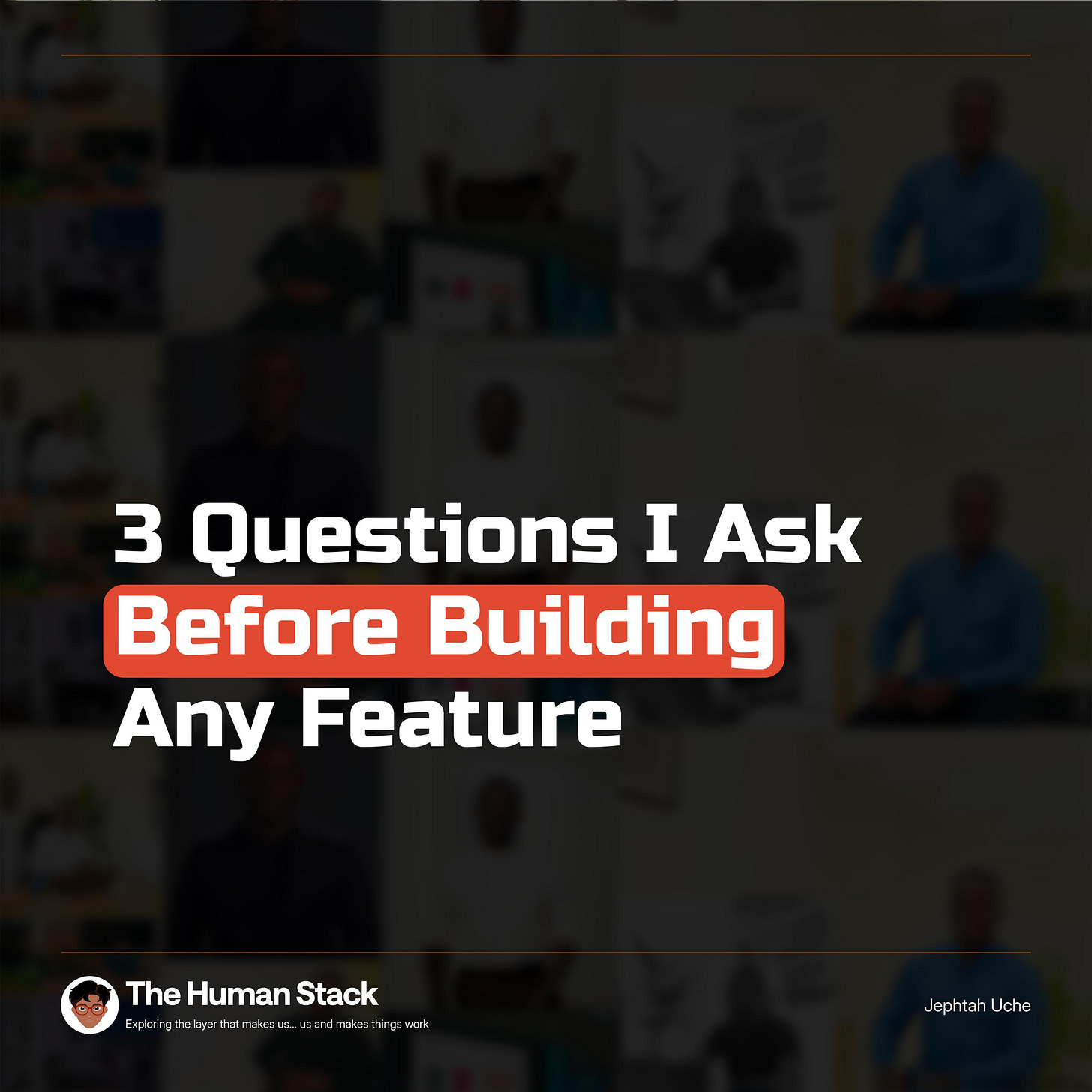3 Questions I Ask Before Building Any Feature
Is this solving an itch or am I just itching to build?
Feature excitement has to be a real thing.
More often than you can imagine I have thought about something I wanted to build and all I thought about was the technical cost of building such feature, as if that was going to suddenly make it more desirable to users.
There is this inherent thought pattern that seem to be very recurrent everytime I speak to builders about something they are working on, it is this constant need to justify the depth of technical complexity of the feature/product they are working on, now whether they do that because of my technical background or because of theirs, I can’t say for sure but one thing I can say for sure is that they all believe that the more technically complex the product/feature is, the more they are justified for building it.
But here’s the problem:
Every feature adds weight.
Every new flow increases maintenance.
Every extra endpoint invites more edge cases.
Every toggle, every integration, every shiny dropdown… compounds.
So if you’re not careful, you end up with something technically beautiful but functionally hollow.
A product that nobody uses but you can’t help but admire the architecture.
I’ve had to learn the hard way, through failed experiments, bloated apps, and nights questioning why nobody cared about the thing I poured months into.
Eventually, I realised I needed a framework not just willpower.
Because willpower fades. Frameworks scale.
So I created 3 grounding questions I now ask myself (and my teams) before we build anything.
They help me slow down. Zoom out. Regain clarity.
Let me walk you through them.
Is this solving an itch or am I just itching to build?
Early in my career, I had a habit of building “cool” things.
One time, I spent 3 weeks building a mood-based playlist app that automatically adjusted song recommendations based on your typing speed. Technically? Super fun. Practically? No one cared. I wasn’t solving a problem. I was solving boredom.
Now, whenever I feel the urge to start something new, I pause and ask: “Whose itch is this?”
If I can’t name the user, the context, and the pain…I’m probably just scratching my own.
What happens if this feature didn’t exist?
This one came from a hard moment. I was pitching a feature to a team once, I believed in it. Designed mockups. Built an early version. But then someone asked: “What if we didn’t ship this? Would anything break?” Silence.
That question haunted me because the truth was, nothing would break.
No one would email support. No key flow would suffer. No user would churn.
That’s when I learned:
urgency is a signal.
If your feature isn’t solving something time-sensitive, painful, or revenue-sensitive, it might be fluff, not function.
Will this make the product better, or just bigger?
I once worked on a product that had everything. Search, filters, dashboards, auto-tags, email summaries, onboarding flows, activity scoring…
It looked like it could do everything. But for new users? It did nothing well.
I learned that more features don’t equal more value. In fact, they often dilute it. Now I ask: “Does this make the product sharper?
Or are we just adding weight without increasing clarity?” Because in a world full of bloatware, restraint is a superpower.
The Point of All This
These questions aren’t magic.
But they help me pause when I’m tempted to chase complexity over clarity.
And in the AI era, where agents can scaffold an app in 10 minutes, and LLMs can make anything feel buildable, these questions have become even more important.
The tools are faster. The hype is louder.
But the responsibility to build what matters still sits with us.
Final Thought
You don’t need more features. You need sharper ones. You need clarity. Constraint. Conviction.
So next time you’re excited about what you could build, ask:
Who’s itching?
What breaks if we don’t do this?
Does this make the product better or just bigger?
They’ve saved me countless times. Maybe they’ll save you too.
Want to explore these questions with your team?
Copy them to a doc. Bring them to your next standup.
And ask: “What are we not building this week, and why?”
Let’s build with intention.
Let’s stay human.


